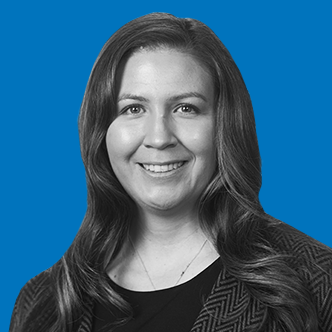One of the most significant opportunities in wealth management today lies in the massive transfer of wealth already underway. Trillions of dollars are expected to pass from today’s clients to their children and grandchildren over the coming decades. For advisors, this isn’t just a statistic—it’s a call to action. By engaging the next generation now, we can build relationships that preserve and grow wealth while ensuring it remains connected to the trusted guidance we provide.
The numbers are staggering. Generation X will inherit the most over the next decade—roughly $14 trillion—while Millennials are projected to inherit $46 trillion in total.1 Yet there’s a challenge: younger heirs are increasingly turning to social media and “finfluencers” for financial advice. Recent research shows that 27% of Millennials say they are more likely to follow online influencers than financial advisors when it comes to investing, compared with just 18% who would turn to an advisor.2
The consequences of inaction are real. Among Gen X and Millennial inheritors, 65% report regrets about how they used their inheritance, and nearly two in five wish they had invested more strategically.3 Adding to the complexity, three-quarters of wealth holders say that communicating their succession plans is challenging.4 And 81% of next-generation high-net-worth individuals plan to switch from their parents’ wealth management firm within one to two years after inheritance.5
The good news? Advisors who take a deliberate, structured approach can create meaningful connections with heirs and position themselves as trusted advisors for the entire family. Here’s a practical, 12-month roadmap to make that happen.
Quarter 1: Foundation and visibility
Identify and segment heirs
Start with your existing book of business. Who has heirs? What stage of life are they in? Do you have contact information? Document these details in your CRM, and note any gaps you need to fill at the next client meeting—or through a quick check-in if your next meeting is far away.
Communicate the initiative
During client reviews, introduce the idea of involving family members in financial planning conversations. Frame it as part of protecting their legacy and easing future transitions. Advisors who position themselves as facilitators of family wealth conversations often find clients more receptive to multi-generational engagement.
Create heir-centric content
Develop short resources tailored to next-generation clients, such as “Three Smart Money Moves for Young Professionals” or “Five Things Every Inheritor Should Know About Wealth.” Alternatively, launch a quarterly newsletter covering investing basics, tax strategies, or career-driven financial tips. This gives heirs immediate value and opens the door to future engagement.
Quarter 2: Engagement and first touchpoints
Pilot family meetings
Select a few trusted clients and host family meetings centered on values, goals, and legacy—not just asset transfers. The focus should be on guiding families through conversations about priorities, not on selling products.
Launch a next-gen education series
Virtual workshops tailored to heirs can create early engagement. Consider these ideas by age group:
- Teens and college students: “How to Make Your First Investment” or “A Day in the Life of a Financial Advisor.”
- Young professionals: “Investing 101,” “Budgeting 2.0,” or “Maximizing Employer Benefits.”
- Young parents and first-time homeowners: “Understanding Life Insurance,” “Starting a College Savings Plan,” or “Planning for Your Second Home.”
Expand guest lists
When hosting appreciation or educational events, extend invitations to adult children as well as existing clients. Exposure builds familiarity and positions your firm as a resource for the entire family.
Quarter 3: Expansion and services
Formalize heir-centric offerings
Introduce lightweight, targeted services for heirs, including:
- Guidance on salary negotiation or student loan management
- Short-term financial planning sessions for milestones like buying a home or starting a family
- Simple charitable giving or impact investing strategies
- Introductory estate planning packages
Systematize tracking
Use your CRM to log birthdays, graduations, and other significant life events. Set reminders to send notes or schedule check-ins. These small gestures build rapport and trust over time.
Highlight success stories
With permission, share anonymized examples on your website of families who benefited from including heirs in planning. Case studies help normalize the conversation and encourage other clients to participate.
Ensure your website is modern and up-to-date. Heirs are likely to research you before deciding to work with you. First impressions online matter more than ever.
Quarter 4: Relationship deepening
Host a family wealth event
Organize an annual gathering focused on multigenerational wealth. Combine market insights with practical financial wellness content. A well-executed event positions your firm as a thought leader while fostering community among clients and heirs. This could be combined with an annual appreciation event, just be sure to call out the fact that you are welcoming whole families and addressing multigenerational wealth.
Establish direct relationships
Offer heirs one-on-one calls. These don’t need to be sales-focused—short, two-way conversations build trust and familiarity. Over time, these interactions can form the foundation of a long-term advisory relationship.
Evaluate and refine
At year’s end, review which strategies resonated most. Double down on what worked, refine what didn’t, and continue to build your playbook for next-generation engagement.
The payoff
After 12 months of intentional engagement, you will have:
- A system for tracking and engaging heirs in your CRM
- Direct relationships with next-generation family members
- A repeatable process for family meetings and heir-focused events
- Services that make you relevant to heirs today—not just when they inherit
When advisors invest in building genuine relationships with heirs, they’re not just safeguarding assets, they’re securing the future of their practice. The most successful transitions happen when we move beyond transactional relationships and become trusted partners to the entire family. It’s about creating continuity, relevance, and lasting impact, one conversation at a time.
Building meaningful connections with the next generation doesn’t happen overnight. But a structured, deliberate approach ensures that wealth transitions smoothly and that your practice thrives for decades to come.
Discover how Envestnet Private Wealth equips advisors to meet the moment with solutions designed for their wealthiest clients: https://www.envestnet.com/wealth-solutions/private-wealth
